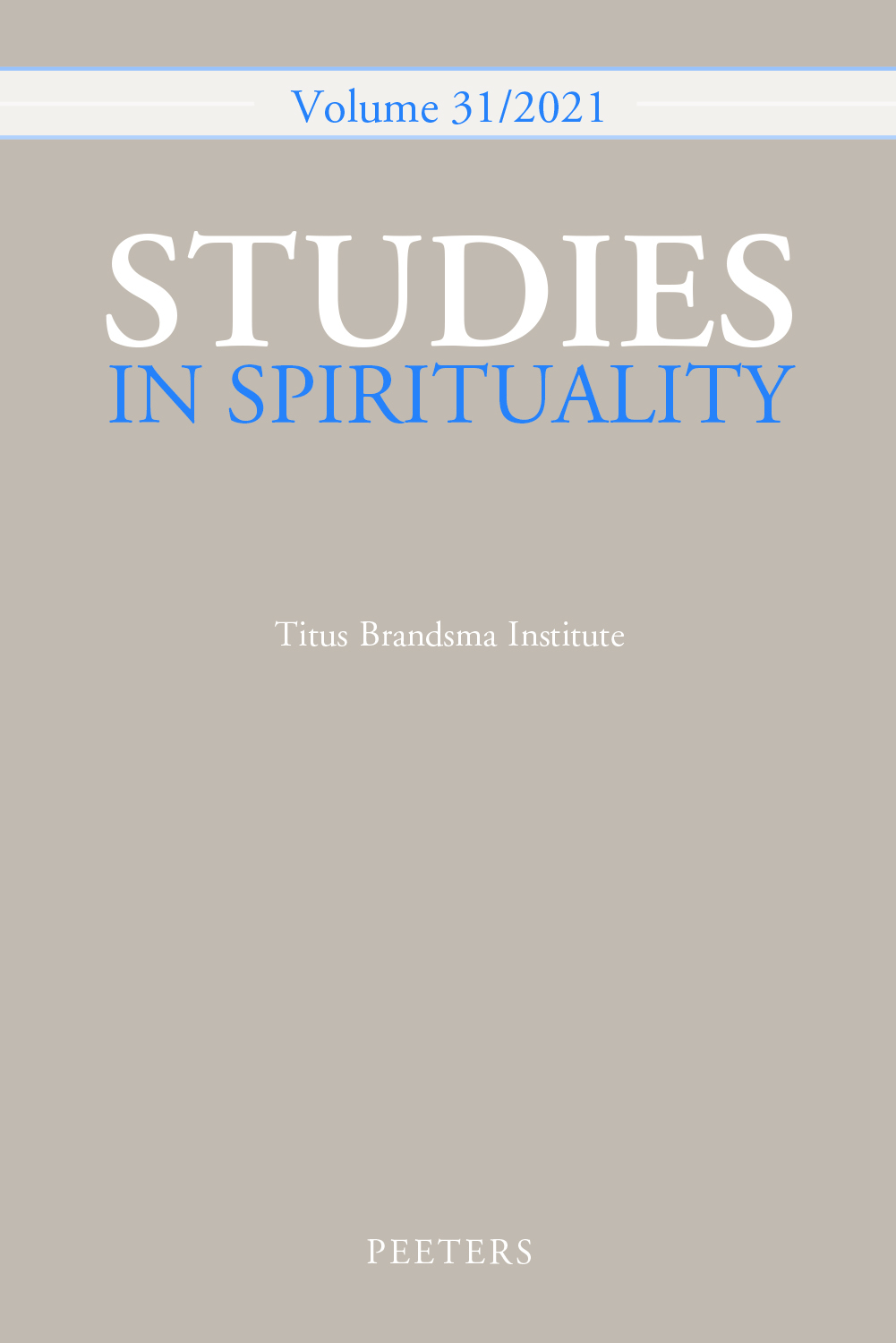 previous article in this issue previous article in this issue | next article in this issue  |

Preview first page |
Document Details : Title: That Magic Moment the Arrow Strikes - Meeting the Author(s): VAN DER VELDE, P.J.C.L. Journal: Studies in Spirituality Volume: 14 Date: 2004 Pages: 255-283 DOI: 10.2143/SIS.14.0.505197 Abstract : Meeting the true guru is considered to be one of the main events in the life of a Hindu. Meeting the guru is supposed to be rare, it is at times compared to a blind turtle swimming around in the ocean that comes to the surface only once every century. In the meantime a wooden yoke is floating around. The chance to meet the true guru is as rare as the turtle to put his head coincidentally into the opening of the wooden yoke in this vast ocean. In the Vallabhasampradâya founded by Vallabhâcârya and his successors meeting the true guru is put on a par with meeting Krishna himself. This is especially the case with ViTThalnâth who is by many considered to be an incarnation of Krishna or of his foster father Nanda. Meeting ViTThalnath and seeing him for the first time the way he really is is in hagiological accounts such as the Do sau bâvana vaishnavana kî vârtâ described as a highly erotic experience. The disciple makes an enormous spiritual progress once he or she has had this experience. The disciple may even surpass ViTThalnâth in his or her experiences and at times ViTThalnâth even needs to restrain his disciple. For many adherents of the Vallabhasampradâya guru and Krishna himself coincide and right after the first experiences many of the disciples start to realize this. For other vaishnavas pertaining to other denominations there is yet quite some difference between guru and the deity. For vallabhites the lîlâ of the guru and that of Krishna coincide. Meeting the guru is similar if not the equal to meeting Krishna. Therefore the mere event of meeting the guru is equal to final liberation as seeing the ‘true’ guru will inevitably lead to the ultimate aim, merging with Krishna’s lîlâ. In the lîlâ time and place differ from their appearances in this world. In Krishna’s lîlâ place unfolds in an eternal paradise whereas time in his world runs simultaneously and eternally. Therefore mystics can see him there as a small child and in the meantime as an adult explaining the Bhagavadgîtâ to Arjuna for instance. Not only Krishna’s lîlâ, however, shows these characteristics, in ViTThalnâth’s lîlâ we can see similar incidents occurring as is made clear from one of the life-histories found in the Do sau bâvana Vaishnavana kî vârtâ, the vârtâ of Chîtsvâmî Caube. |
|


